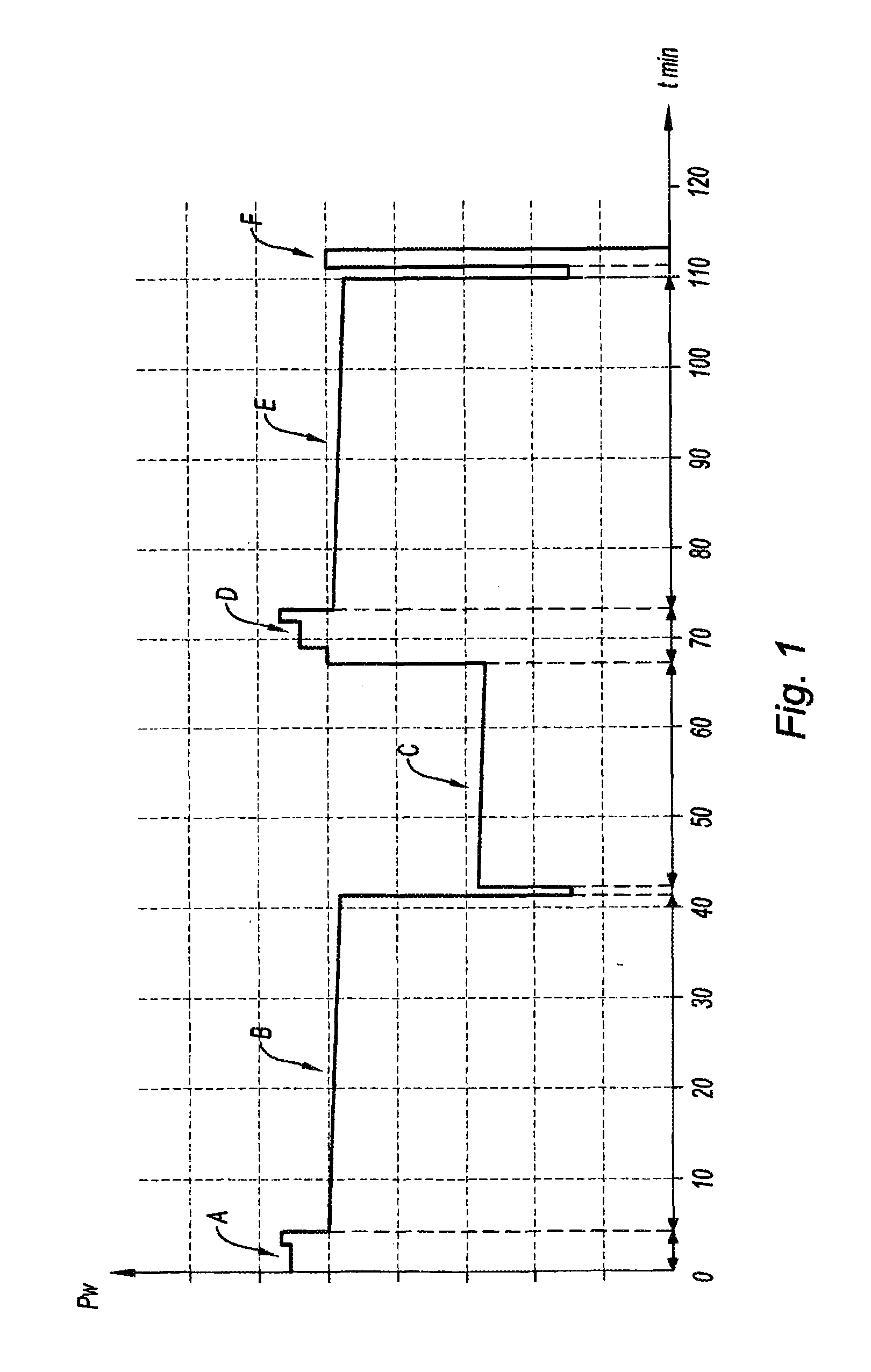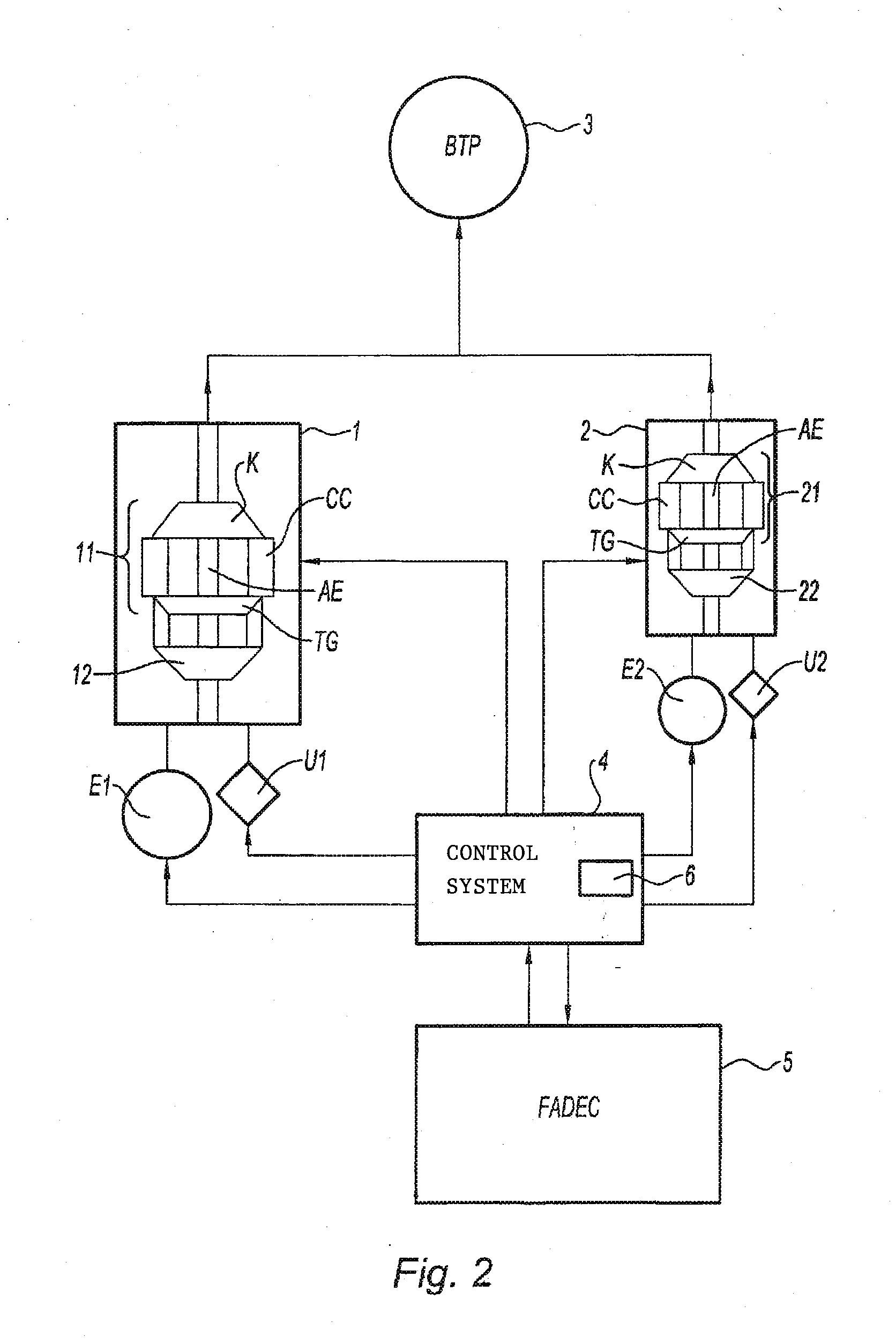Method of optimizing the specific fuel consumption of a twin engine helicopter and twin engine architecture with control system for implementing it
a technology of twin engine helicopter and control system, which is applied in the direction of machines/engines, sustainable transportation, mechanical equipment, etc., can solve the problems of insufficient time according to flight conditions, turbo-engines are penalizing in mass and fuel consumption, and the turbo-engine is not designed to guarantee the reliability rate of restarting, so as to reduce the effect of cs
- Summary
- Abstract
- Description
- Claims
- Application Information
AI Technical Summary
Benefits of technology
Problems solved by technology
Method used
Image
Examples
Embodiment Construction
[0042]The terms “engine” and “turbo-engine” are synonymous in the present specification. In the embodiment being illustrated, the engines have differentiated maximum powers. Such embodiment allows advantageously the OEI speeds to be cancelled on the most powerful turbo-engine, thereby minimizing the mass difference between the two engines. To simplify the language, the most powerful engine or oversized engine also can be designated by the “big” engine and the lowest power engine by the “small” engine.
[0043]The diagram illustrated on FIG. 1 represents the total power variation Pw being required as a function of time “t” to carry out a mission of recovering shipwrecked people with the help of a twin-engine helicopter. Such mission comprises six main phases:
[0044]one take-off phase “A” using the maximum power MTOP;
[0045]one cruising flight phase “B” up to the search area carried out at a power level being lower than or equal to the MCP;
[0046]one search phase “C” in the search area at l...
PUM
 Login to View More
Login to View More Abstract
Description
Claims
Application Information
 Login to View More
Login to View More - R&D
- Intellectual Property
- Life Sciences
- Materials
- Tech Scout
- Unparalleled Data Quality
- Higher Quality Content
- 60% Fewer Hallucinations
Browse by: Latest US Patents, China's latest patents, Technical Efficacy Thesaurus, Application Domain, Technology Topic, Popular Technical Reports.
© 2025 PatSnap. All rights reserved.Legal|Privacy policy|Modern Slavery Act Transparency Statement|Sitemap|About US| Contact US: help@patsnap.com



